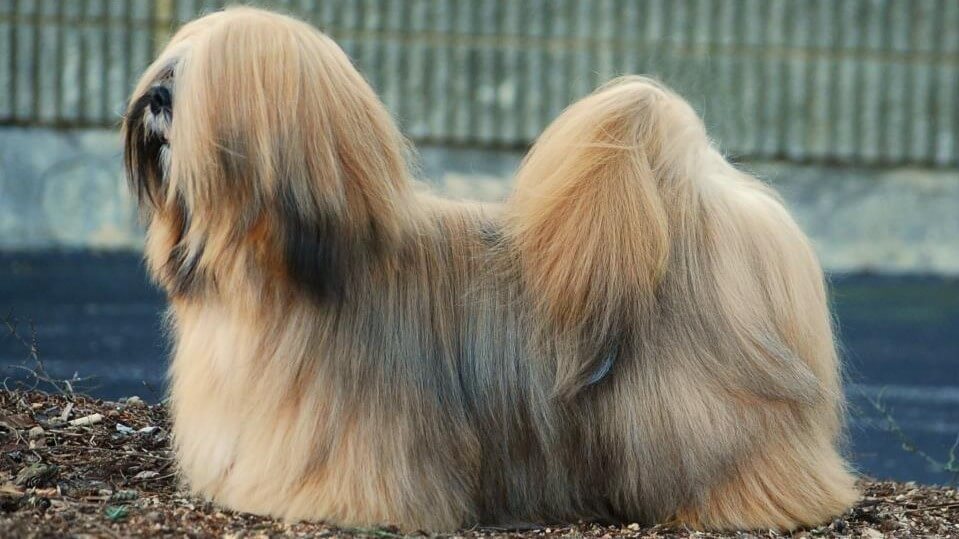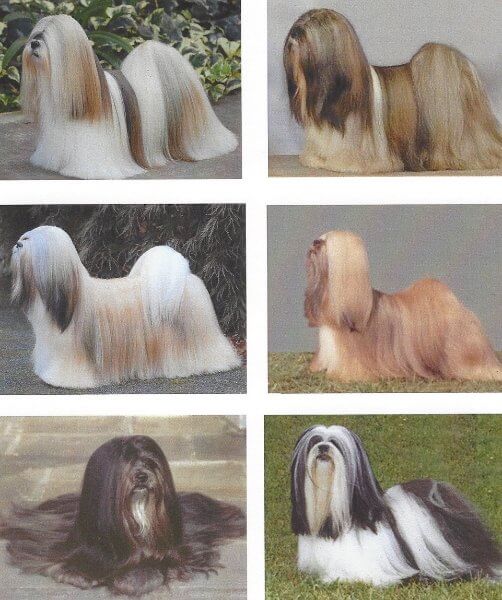
Home » Lhasa Apso Confusion About Color

The Lhasa Apso Breed Standard says that all colors are equally acceptable—and that’s a good thing because Lhasas seem to come in all colors and patterns (okay, not purple or blue!). The Illustrated Guide to the Lhasa Standard explains, “The Lhasa Apso is a breed of many colors and patterns—from blackest black to brindle, grizzle, red, multiple shades of golden, to cream and whitest white. Some Lhasas will have a black mask. Others will have dark tippings to their ears and beard. The colors are all acceptable as long as the Lhasa’s pigment is black.”
With origins in the mysterious country of Tibet, one of the Lhasa’s own mysteries is often, “What color should I be this time?”
Lhasa colors range from pure black to pure white and many shades in between! Some have white markings on the chin, feet, and chest. Some are parti-colors. Some are black and tan. Interestingly, Lhasas tend to be fickle about their coat color and the color may change as the Lhasa ages. New coat growth/new color will be noticed first at the part that runs down the dog’s back. This tendency to change color often confuses/surprises those who do not know Lhasas.

Here is an example of what I mean:
“Sugar” was about ten weeks old when she went home with her new owner, a first-time Lhasa buyer. A year later, that owner confessed to me that she was disappointed when she first saw Sugar because she had her heart set on a cream-colored Lhasa and Sugar was a dark gold color, almost brown, with black tippings when she bought her. Her owner admitted she felt “cheated” in a way because the breeder had assured her that her puppy would be light gold or cream-colored. She just forgot to say when! The two of us had a good laugh as we sat and talked, watching the year-old cream-colored Sugar playing with her squeaky toy at our feet.
The problem is, of course, that a Lhasa puppy, unless she is white, usually starts out with a dark gold or brown coat at birth that lightens as she gets older. Black puppies usually stay black, but even then, be aware that some Lhasas have a black or gray overlay over their lighter-colored coats. Since the black is on top, the puppy color can be misleading, and someone who is not used to the Lhasa’s tendency to “start out darker” might be tempted to register the dog as grizzle or gray and then wonder where all the light color came from as the dog matures. Also, some blacks tend to “silver out” as they age, and reds may fade to some shade of gold.
Even the color label “golden” is misleading because so many shades of gold are included in that description and everyone has his own special description for “gold,” ranging from champagne, honey, sandy, beige, tan, cream, light, pale, dark, dusty, clear… (you get the idea).
A Lhasa’s color changes throughout its lifetime, usually getting lighter. Golds like Sugar are born looking brown and will lighten as they mature. Often, with a young puppy, a person can get a better idea of what color she will be by pushing her coat the wrong way and looking at the color of the hair closest to the skin. In time, even the puppies that are reds or blacks may also turn up surprisingly as red golds or silvers respectively.
Those of us who love the breed are used to the fact that our dogs change color as they mature and know that one day we may look down at our dog’s back, note the new color coming in at the part and say to our spouse, “Josh decided to come in red gold this time!”
